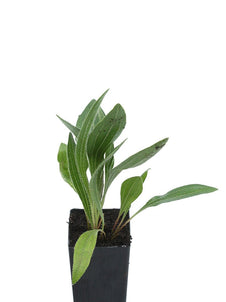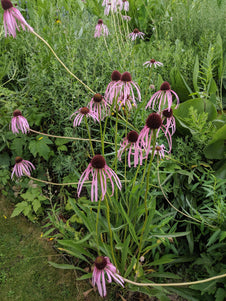







Echinacea Pale Coneflower (Pallida)
Echinacea Pale Coneflower (Pallida)

- In stock, ready to ship
- Inventory on the way

Usually available: September to March
Life cycle: Herbaceous Perennial
Height: 60cm - 1m
Position: Full sun
Soil preference: Well drained
This is how we pack and send your Herb Plants to all states except TAS & WA
You will receive
- 1 Echinacea Pale Coneflower Herb Plant in a 50 X 75mm tube - General growing instructions
All of our Herb Plants are grown organically with certified organic potting mixes and fertilizers
Botanical Name: Echinacea Pallida
History
Echinacea pallida commonly known as the pale purple coneflower, is native to the central and eastern regions of the United States. For centuries, Indigenous American tribes have used it as a remedy for various ailments, including wounds, infections, and sore throats.
Description
Echinacea pallida is an herbaceous, perennial plant that can reach up to 1m in height. It has long, narrow, lance-shaped leaves and distinctive, pale pink to purple flowers. The flowers are characterised by drooping petals surrounding a central cone that is typically orange to brown in colour. They bloom from early to late summer.
Growing Conditions
Echinacea pallida prefers full sun to partial shade and well-drained soil. Once established, it is drought-tolerant and can thrive in a range of soil types, although it performs best in rich and loamy soil. This plant is hardy in Australian climates similar to its native habitat, particularly in regions that experience a distinct dry season.
Medicinal Use
Known for its immune-boosting properties. Echinacea pallida is commonly used to prevent or reduce the symptoms of colds and flu. The roots and above-ground parts of the plant are used in teas, tinctures, capsules, and ointments. Its active compounds, including alkamides, polysaccharides, and glycoproteins, are believed to support immune function.
Culinary Use
Although not commonly used in cooking, the young stems and leaves can be eaten raw or cooked. The taste is somewhat bitter, so they are not widely used for culinary purposes.
Other Uses
Beyond its medicinal benefits, Echinacea pallida is also valued for its ornamental qualities in gardens and landscapes. Its attractive flowers attract pollinators like bees and butterflies, making it a beneficial plant for biodiversity.
Contraindications
While Echinacea pallida is generally considered safe for most people, it may cause allergic reactions in individuals sensitive to the Asteraceae/Compositae family. People with autoimmune diseases or those taking immunosuppressive medication should consult with a healthcare provider before using Echinacea products. Due to insufficient safety data, pregnant or breastfeeding women should also avoid its use.
All information provided on this website is for informational purposes only. Please seek professional advice before commencing any treatment.





